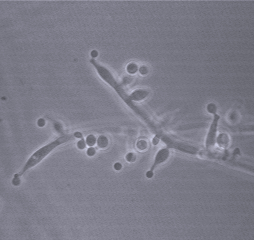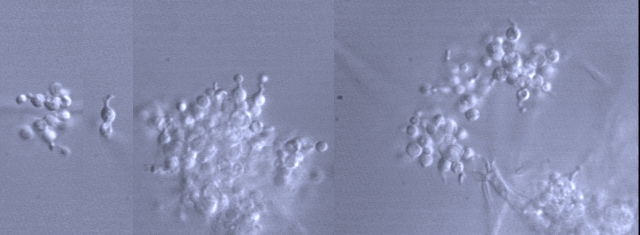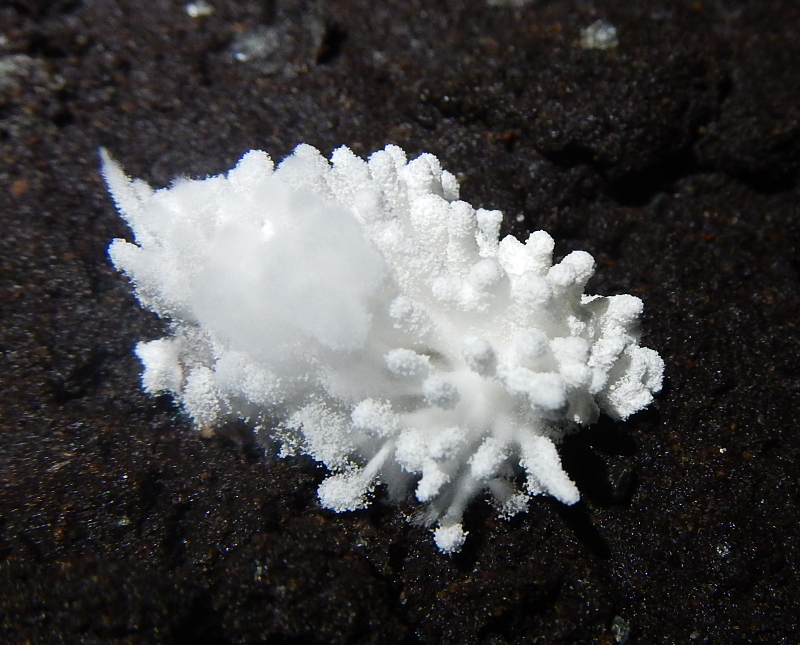Main page <> Index of descriptions <> Previous description <> Beauveria <> Next description
Beauveria


Species of Beauveria produce rather slow-growing white cottony colonies. Reproduction is copious and the conidia are easily detached, a condition often leading to scattered colonies when you thought you had carefully transferred only one. The one celled colourless conidia are borne along a thin filament that elongates in a zig-zag fashion as the conidia are produced. The conidia are produced on short spikes or denticles, giving the conidiogenous cells a spiny appearance. Species of Tritirachium are similar to some Beauveria species in having zig-zag conidiogenous cells, but differ in lacking denticles on their conidiogenous cells and in producing yellow brown to purple colonies.
Beauveria species are commonly found associated with insects or habitats supporting insects.
 They commonly occur in private dwellings, where they probably decompose the dead bodies of insects, spiders and mites. They may also attack living insects and cause small epidemics. Beauveria bassiana, the best-known member of its genus, has been investigated widely as a potential agent for the biological control of harmful insects. The picture at left shows a dead moth colonized by the fungus Cordyceps bassiana. This one was photographed by Karen Vanderwolf in a cave in New Brunswick where it was growing at a temperature lower than 10 degrees C. The moth has been so completely colonized by the fungus that it has become completely hidden, a condition sometimes called muscardine disease.
They commonly occur in private dwellings, where they probably decompose the dead bodies of insects, spiders and mites. They may also attack living insects and cause small epidemics. Beauveria bassiana, the best-known member of its genus, has been investigated widely as a potential agent for the biological control of harmful insects. The picture at left shows a dead moth colonized by the fungus Cordyceps bassiana. This one was photographed by Karen Vanderwolf in a cave in New Brunswick where it was growing at a temperature lower than 10 degrees C. The moth has been so completely colonized by the fungus that it has become completely hidden, a condition sometimes called muscardine disease.
Glare and Inwood (1998) and Rehner and Buckley (2005) carefully examined cultures of B. bassiana, B. amorpha, B. brongniartii, B. caledonica and B. vermiconia as well as certain strains of B. bassiana that did not fit the concept of that species very well. They utilized traditional as well as molecular tools in their analysis and concluded that all of these species fall into distinct clades. This suggests that all are therefore "good" species. Unfortunately neither of these papers supplies identification keys, although Glare and Inwood did provide a chart of spore measurements that might be some aid in determination.
Classification: Cordycipitaceae. Holomorph: Cordyceps. Refs.: Domsch et al, 1980; Hoog, 1972.